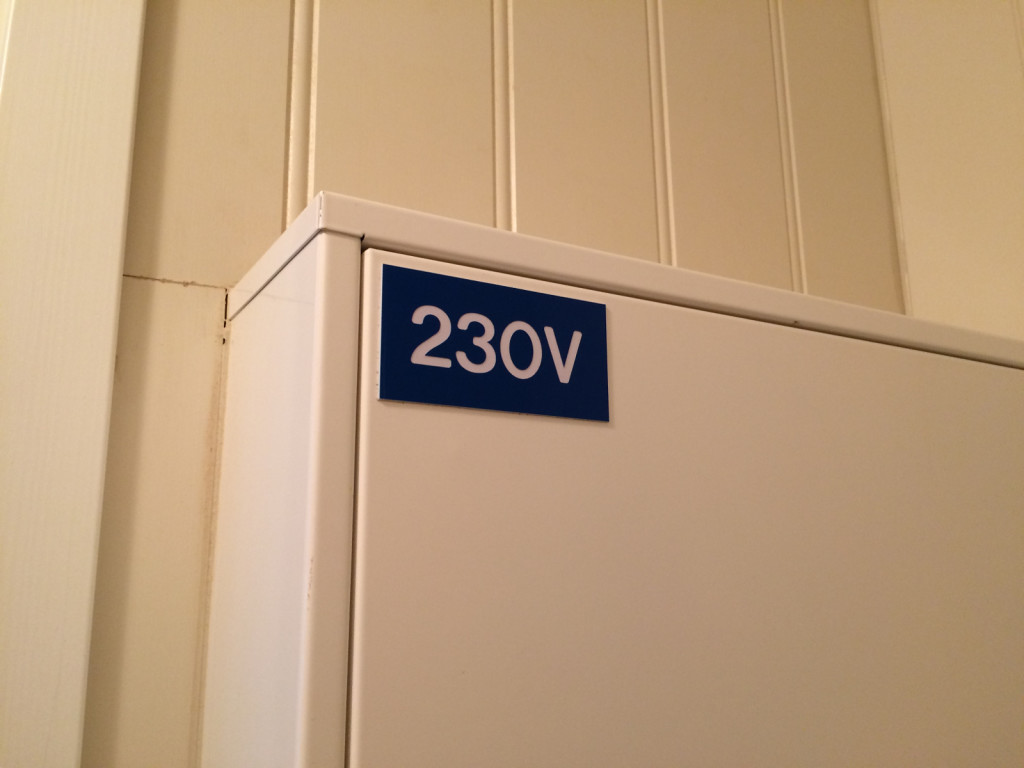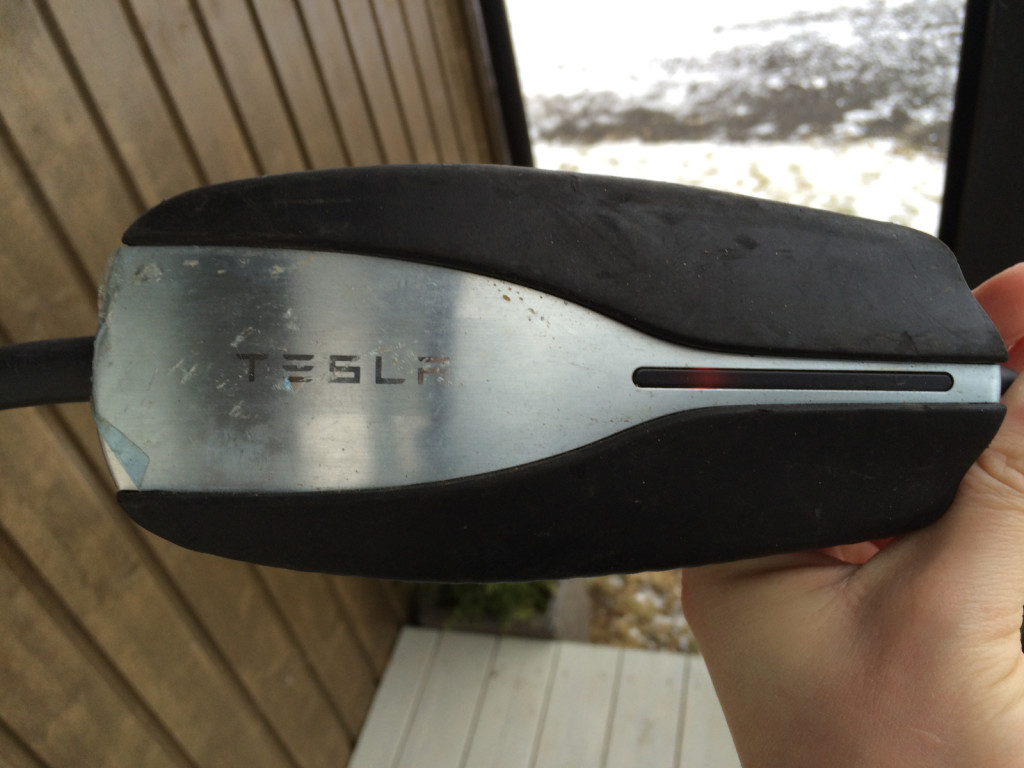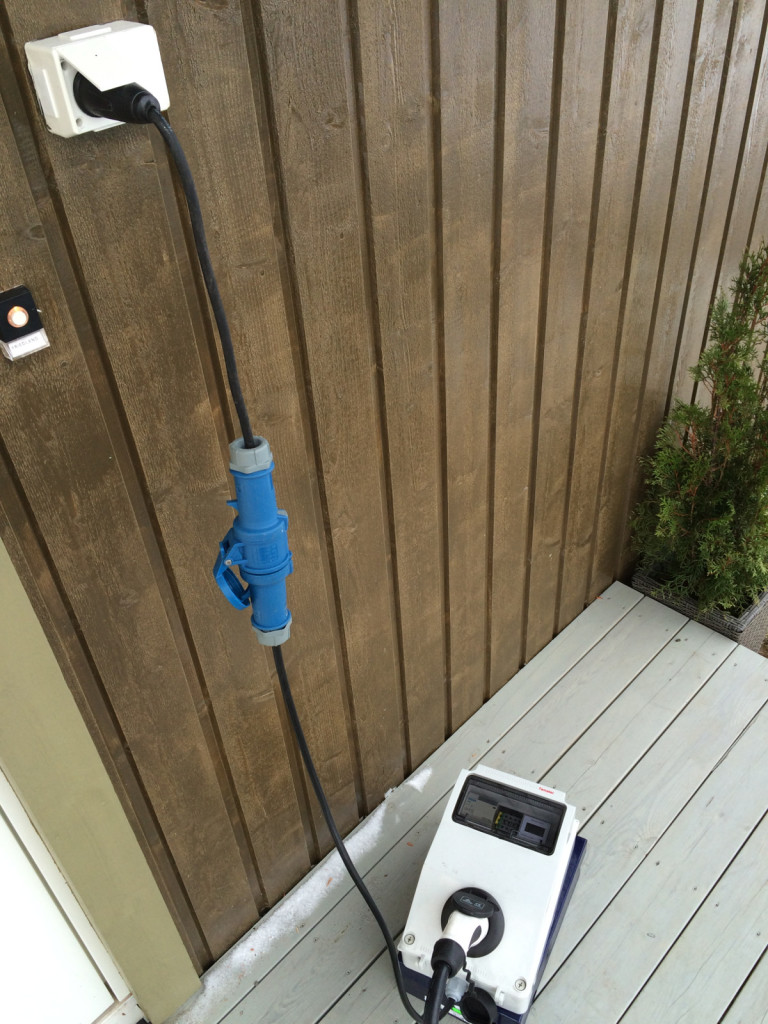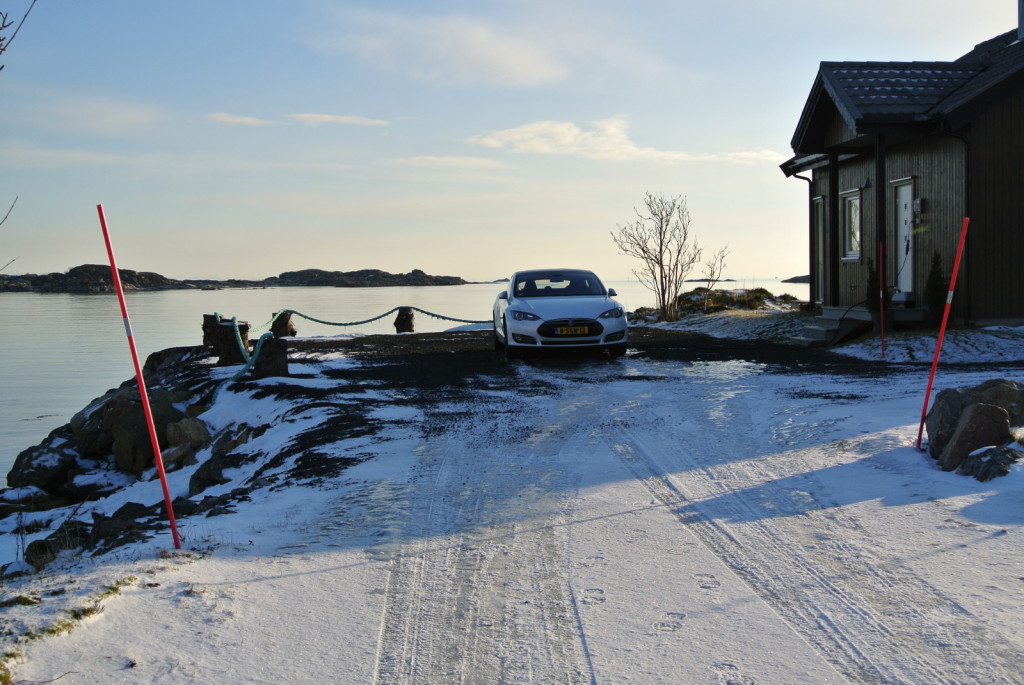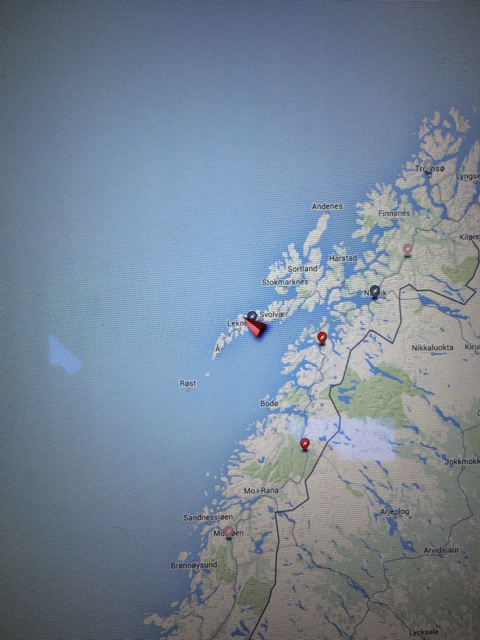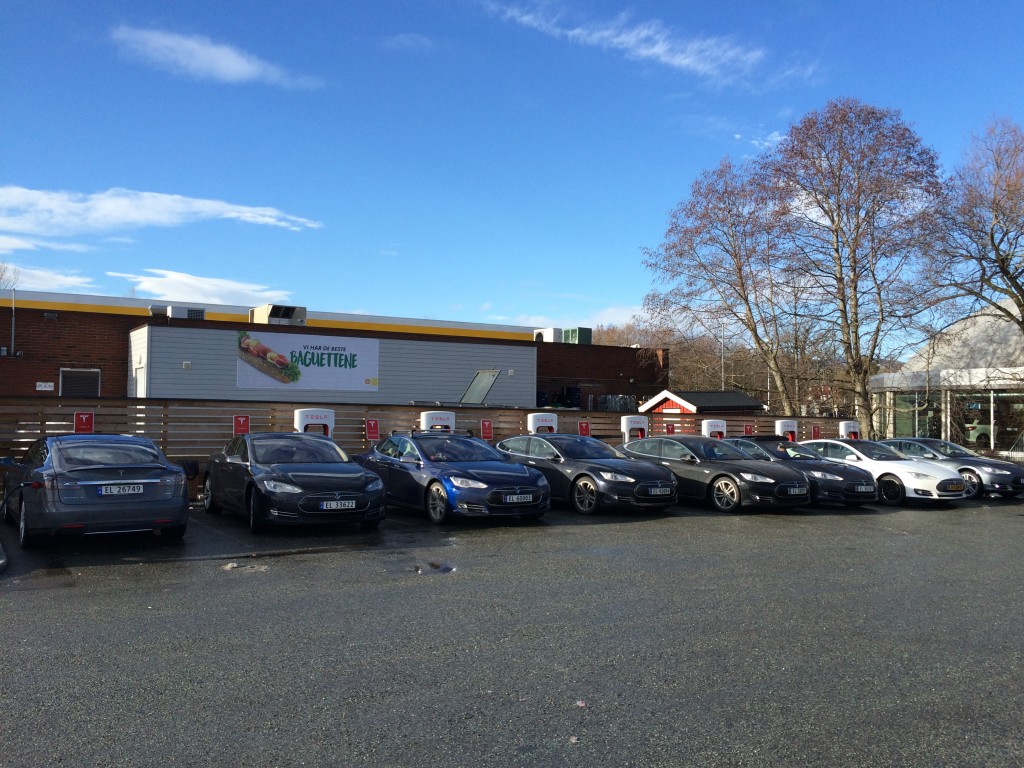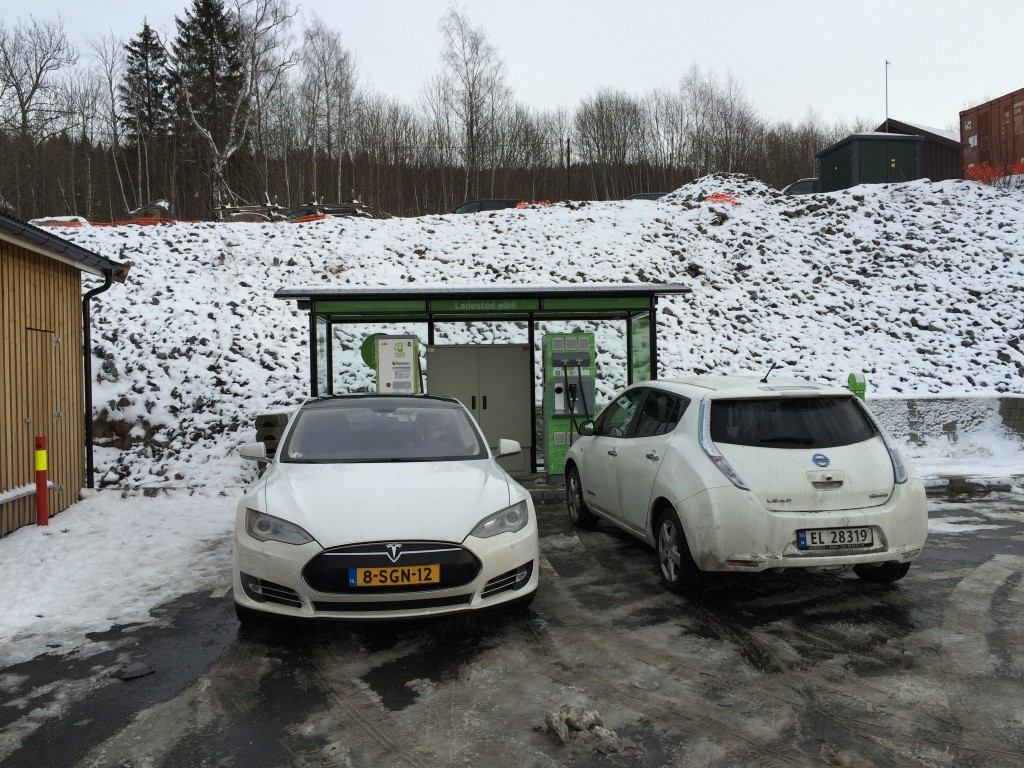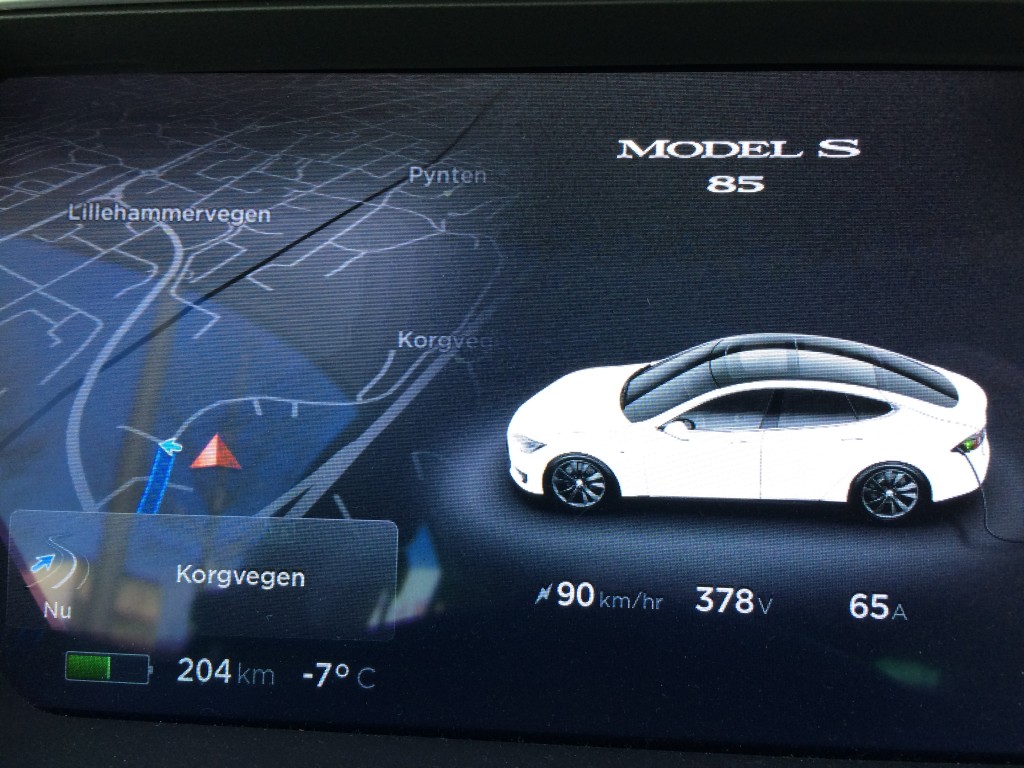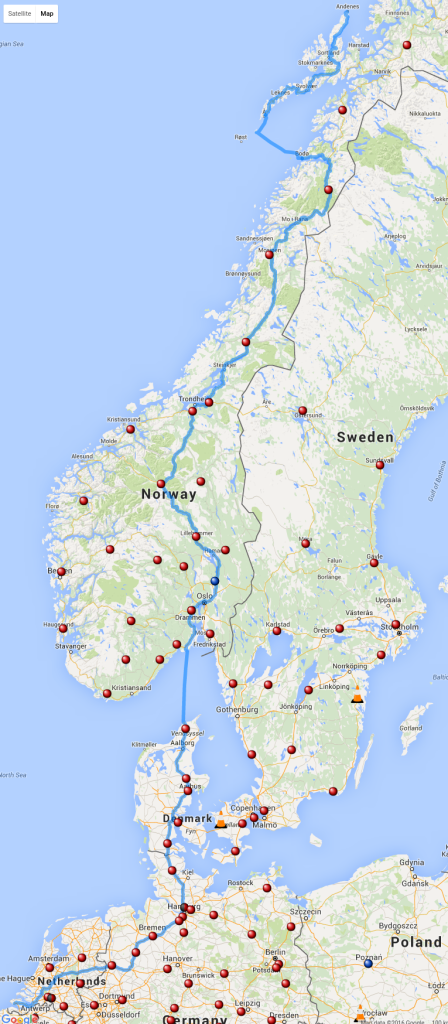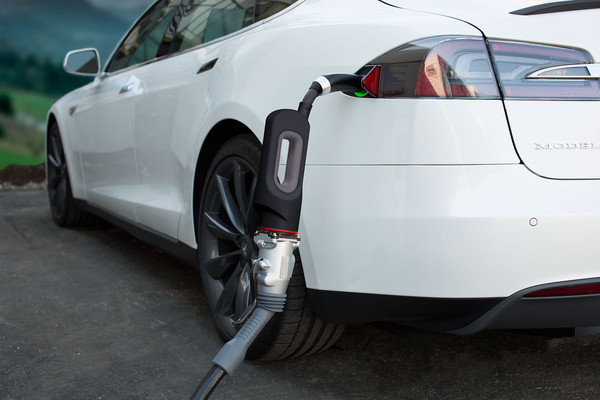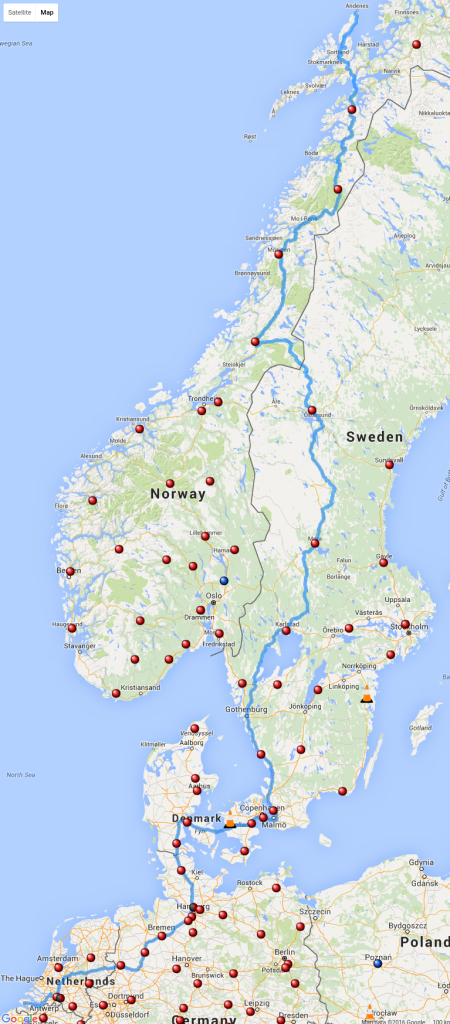Hurtigruten
We love driving the Model S, but after driving for over 72 hours it is also nice to be ‘driven’.
That’s why we took the Hurtigruten ferry from Trondheim to Stamsund. Stamsund is a port on the Lofoten Islands just 21km from the house we rented on the Lofoten through Airbnb.
On Tuesday we boarded the MS Nordlys at 11:00 and arrived in Stamsund the next day around 19:00.
Getting of the ship was tight. With only centimeters to spare and guiduance of the crew we were able to manouvre the Model S off the ship. Yes, it is a wide car!
‘Our’ house
After leaving the ship it took us roughly 45 minutes to drive to the house in Valberg. A beautiful house at the coast looking over the fjords. What an amazing place!
We are going to stay here for a few days to see the Aurora Borealis before we continue more North on the Lofoten.
Non-studded tyres
Just as last year I’m driving non studded tyres. Why? We have to pass through Germany and Denmark and studded tyres are not allowed there.Last year I used Nokian Hakka R2 tyres which were great! This year I’m driving Hankook i-cept Evo 2 (W320) tyres and they work very good as well. The last 500m to the house is pure ice and you notice that the tyres have a hard time keeping traction. The traction control in the Model S works exceptionally good however and it works just fine.
Keep in mind: I drive a RWD Model S from September 2013. It is not a new Dual-Motor AWD Model S!
230V network
Most of the part of Norway have a 230V instead of the 400V we have in the Netherlands and other parts of Europe. This means that my UMC (Universal Mobile Connector) does not work here. This is a safety measure of the UMC.
In Norway you can recognize this by the Blue 230V label on electrical installations.
The UMC performs a check if there is 0V between Ground and Neutral, but here that’s not the case. There is 120V between GND and N which makes my UMC show a red light. It thinks there is a ground leak, which is a bad thing.
There is a special Norwegian version of the UMC, but I built my own using Smart EVSE. It does NOT perform a Ground check, but it allows me to charge.
My Model S is happily charging at 13A right now.
This means I have a new charging POI on my Model S’s screen!
Time to relax!
After being on the road for 5 days it is time to relax. Watch the Aurora, go out hiking and do nothing.



